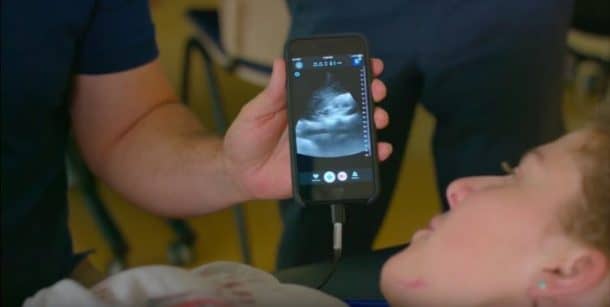Butterfly Network, a start-up based in Guilford, Connecticut has released a portable ultrasound device, the size of an electric trimmer. The device has the ability to connect to your iPhone and display razor-sharp images on the screen. This device has already helped a doctor diagnose his deadly cancer just in time to save his life.
Earlier this year, vascular surgeon John Martin was testing the Butterfly Network’s portable ultrasound device and made a startling discovery. He had been experiencing uneasiness in his throat. As he was running the device along the length of his neck, he soon spotted a dark three-centimeter mass.“I was enough of a doctor to know I was in trouble,” he said to MIT Technology Review. It turns out it was squamous-cell cancer. Squamous cell carcinomas are a deadly form of cancer; though treatable, it can metastasize into a terminal disease.
The portable ultrasound he used to diagnose himself is the first solid-state ultrasound machine in the US market. Butterfly Network has currently raised $100 million until now to fund the development of this product and has plans to sell it for $2000 per piece. The only other portable scanner made by Philips costs three times.

Ultrasound machines usually use high-frequency sound waves to create an image of our internal organs. The sound waves are usually generated via a vibrating crystal. The new device makes use of 9,000 tiny drums etched onto a semiconductor chip. This new technology is a much cheaper way to manufacture the product and makes it much more versatile.
“Now we think it’s an individual purchase,” said Martin. “This gives you the ability to do everything at the bedside: you can pull it out of your pocket and scan the whole body.” Ultrasound machines are normally handled by trained individuals but all of that might change with the new portable ultrasound device. This device has a very wide range of applications, in ambulances, remote areas as well as homes. Parents could check for fractured bones in their children before taking them to the hospital.
“In the 20th century, you had one machine, one operator, and the patient came up to the machine in a suite,” says David Bahner, an emergency medicine physician who has gotten to try the iQ to Forbes. “In the 21st century, you have one machine, multiple operators, and the machine goes to the patient’s bedside. So if this would take it even further. One device, with one person, and you can take it wherever you go. It’s pretty exciting.”


